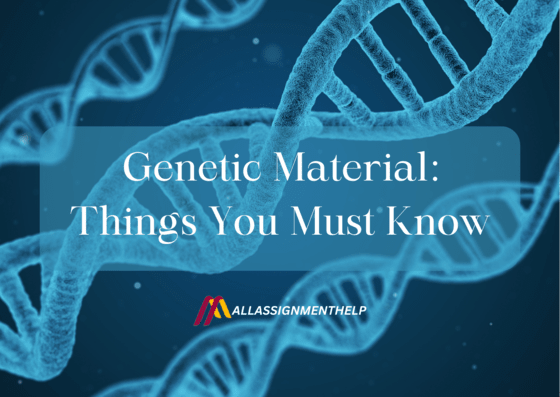Table of Contents
Our bodies consist of cells, which contain special chemicals called DNA or RNA, which are essential building blocks. These chemicals hold all the information that makes you who you are. We call this stuff genetic material. In some cells, like those in bacteria, DNA is in the jelly-like part of the cell. DNA is kept in a special space called the nucleus in the cells of both animals and plants.
If you are a student of general medical sciences or a geneticist, you will delve into the study of genetic material in detail. Therefore, experts at All Assignment Help has prepared this blog to aid you in grasping the fundamentals of genetic material.
Who Discovered Genetics?

Gregor Mendel, Biologist and meteorologist ; Source: Wikipedia
In the 19th century, there was a common belief among people that a child gets their traits from each parent. However, there was no proper understanding of heredity. Moreover, the concept of genes was unexciting at that time. Gregor Mendel, dissatisfied with the conventional explanation, conducted extensive research between 1856 and 1863 to understand the principles of heredity. Moreover, he conducted his first research on garden peas (Pisum sativum). Mendel worked on various species but he selected peas for his research because the seeds and the plants consist of distinctive and easily identifiable features. (e.g. height of the plant- tall or short, shape of the seed- round or wrinkled).
Thomas Andrew Knight and John Goss, both from England, conducted breeding studies with the same plant before Gregor Mendel’s research on the garden peas in 1799 and 1822, respectively. However, despite some interesting observations, neither Thomas Andrew nor John Goss successfully discovered the hereditary mechanism. On the other hand, Mendel’s observation was successful because he studied traits of peas one at a time. He meticulously crossbred variants and documented the transmission of traits between generations. For this experiment, he used approximately 28,000 pea plants. Gregor Mendel, later known as the ‘father of genetics,’ is a prominent figure in the field of genetics.
Structure of Genetic Material
Due to the seeming simplicity of DNA’s chemical, biologists in the 1940s had trouble embracing it as the genetic material. Moreover, it was previously understood that DNA is a lengthy polymer with only four different component kinds that are chemically similar to one another. DNA was initially investigated using X-ray diffraction analysis, a method for figuring out the three-dimensional atomic structure of a molecule, in the early 1950s. Two strands of the polymer were twisted into a helix to form DNA, according to early X-ray diffraction data.
Even for you, understanding genetic material can be mind-boggling. Due to the complexity of cells, students often face situations where they think things like, maybe biology isn’t appropriate for me and I cannot do my online course well now. But this isn’t true. Instead of giving up on your course, you can ask an expert to take your course and understand the structure of genetic material in a simpler manner.
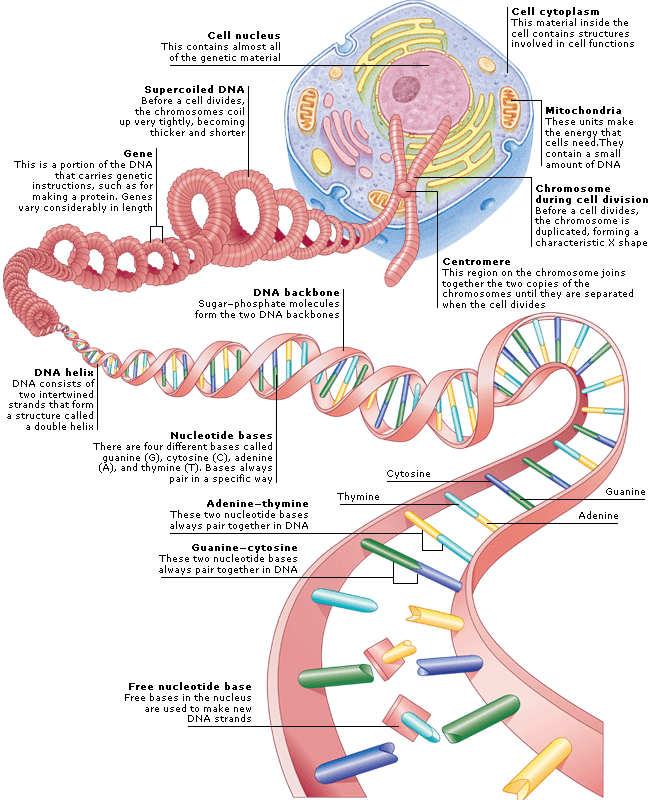
Structure of DNA ; Source: hotcore.info
Two complementary chains of nucleotides make up a DNA molecule
Two extensive polynucleotide chains with four different types of nucleotide subunits make up the DNA molecule. The base parts of the nucleotides form hydrogen bonds with one another, holding the two chains together. Moreover, DNA is a well-organized genetic material present in a cell that keeps the information safe. This process is accomplished using three chemical bases found in DNA: adenine, cytosine, and thymine. These bases are seen to pair with each other with the help of sugar called ribose and phosphate and this helps in protecting the information.
Furthermore, each polynucleotide chain in DNA is like a necklace made of four different types of beads since the only difference between each of the four types of subunits is the base. A DNA strand has chemical polarity because of the way the nucleotide subunits are paired together.
The double helix, which is a three-dimensional representation of DNA, is formed by the two polynucleotide chains’ chemical and structural characteristics. All of the bases are on the inside of the double helix and the sugar-phosphate backbones are on the outside because the bases on the various strands of these two chains form hydrogen bonds that hold them together.
DNA in eucaryotes is present within the cell nucleus
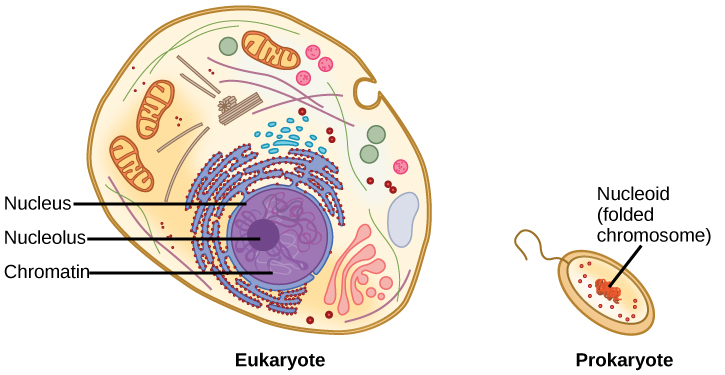
DNA Packaging in Eukaryotes and Prokaryotes; Source: Lumen Learning
A nucleus, which takes up around 10% of the total cell volume, houses almost all of the DNA in eukaryotic cells. A nuclear envelope is made up of two concentric lipid bilayer membranes and huge nuclear pores encloses the compartment. By means of this, molecules are transported from the nucleus to the cytoplasm. The vast membranes of the endoplasmic reticulum are directly related to the nuclear envelope. Two networks of intermediate filaments act as their mechanical supports: one, known as the nuclear lamina, forms a thin sheet-like meshwork inside the nucleus, just below the inner nuclear membrane, and the other, which surrounds the outer nuclear membrane, is less symmetrically organized.
Also read: Human Reproduction System
Genotype genetic structure
The genotype of a cell is known as a full collection of genes that a cell contains, on the other hand, a phenotype is a type of nature or characteristics that comes out as an outcome of those genes. The genotype goes under different environmental conditions such as A and B and then converts genotype into the phenotype, which differs from one living organism to another.
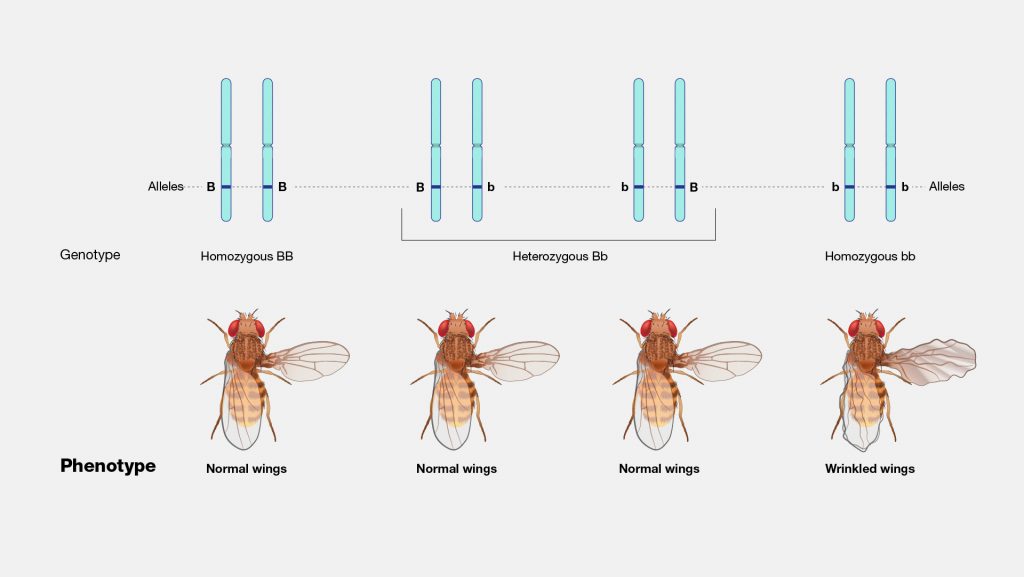
Source: National Human Genome Research Institute
Phenotype genetic structure
The proteins that a cell produces over the course of a certain amount of time determine a phenotype. The proteins are influenced by the genotype of a cell and the environment of a cell to produce a certain characteristic. Different kinds of proteins are formed and the production of a specific type of protein that is surrounded by a gene is finally formed into a distinct phenotype. The genotype of a cell is constant always, however, not all types of genes lead to the formation of proteins.
Now, we hope you can ace your essay topic on genetic structure. However, if you still find it a challenging and formidable deal then you can hire an online essay helper to crack such topics easily. Moreover, they will compose your biology essay with precision, righteous information, and a high level of reliability of information.
Functions of Genetic Material
Now, we all know that DNA plays a central role in any life on this earth. Moreover, the strands of DNA hold information that controls the genetic makeup. The four bases of DNA called A, T, C, and G. Furthermore, there are four major roles of DNA:
Now, let us read about these functions one by one.
Replication
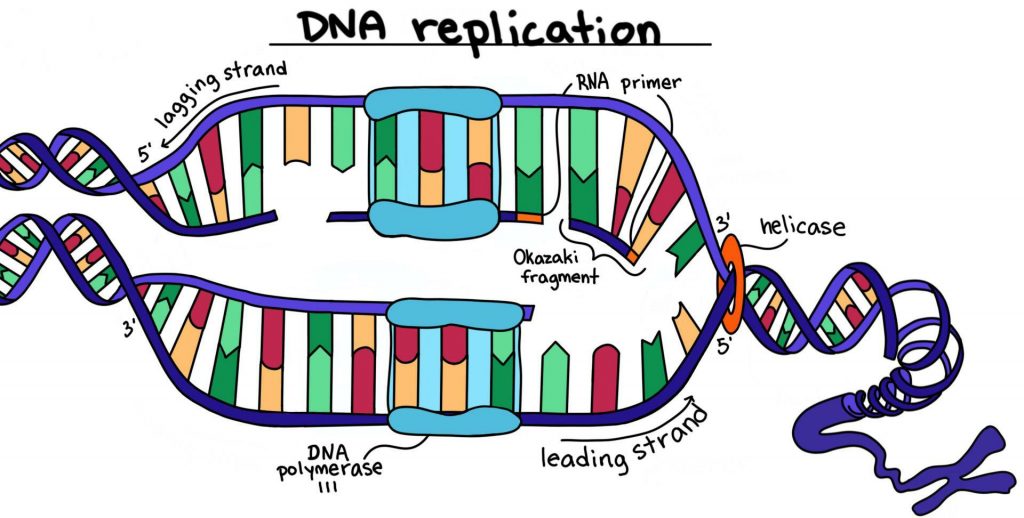
DNA Replication; Source: Expii
We read above that DNA has a double-helix arrangement. Moreover, each base on one strand interacts with a complementary base on the other strand. Only A’s and G’s can be bonded by T’s and C’s, respectively. Additionally, single-strand DNA can be organized in rings in mitochondria and bacteria. The DNA strands on the chromosomes must duplicate, or make duplicates of themselves when a cell splits in order for both daughter cells to inherit the entire genetic makeup. The DNA double helix unwinds during replication, allowing each strand to serve as a template for a freshly created complementary strand that forms a new double helix. It is aided by the enzyme DNA polymerase.
Encoding information
There are numerous ways that DNA sequences might encode information. The amino acids needed to build a protein are designated by codons. Other DNA sequences define the start and stop points for where an RNA starts and stops, as well as the way an RNA transcript is spliced to produce various protein variants from a gene. This coding is static, meaning that it never changes. In contrast, additional sequences known as Flipons work dynamically to change how genes are read out. Moreover, they are sequences that have the ability to transition between various DNA conformations.
Mutation
Changing an organism’s DNA in a heritable way is known as a mutation. The outcome is a creature known as a mutant, which may have a distinguishable difference in phenotype in comparison to the wild type, which is the phenotype most frequently seen in nature. Transcription transfers a change in DNA sequence to mRNA, which may then translate into a protein with a different amino acid sequence. The majority of biological functions are carried out by proteins. Hence a change in a protein’s amino acid sequence may result in a change in the phenotype of the cell or organism.
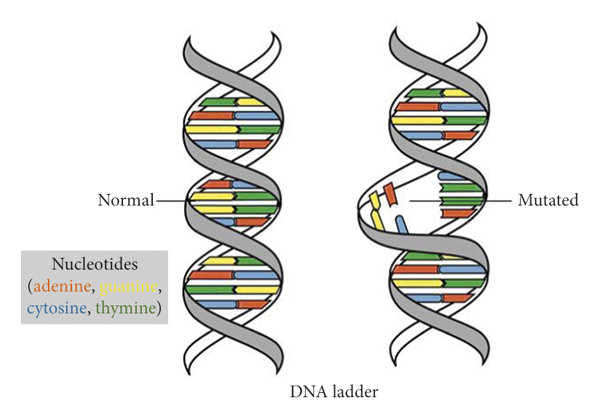
Mutation; Source: Research Gate
Mutation is a complex subject with intricate theories that may require external assistance, such as your instructors or peers, for better comprehension. Sometimes, students refrain from asking questions in the classroom due to shyness. If you find yourself in this situation, consider hiring a professional online coursework service to aid your understanding of genetic material functions. Additionally, you can utilize these services to encounter challenges in composing assignments related to the topic.
Gene expression
Protein synthesis is crucial for our body to construct cell structures. It is regulated by the use of genetic codes. The phrase ‘structural genes’ refers to genes that include the data necessary to determine amino acid sequences. There are two main steps in this procedure:
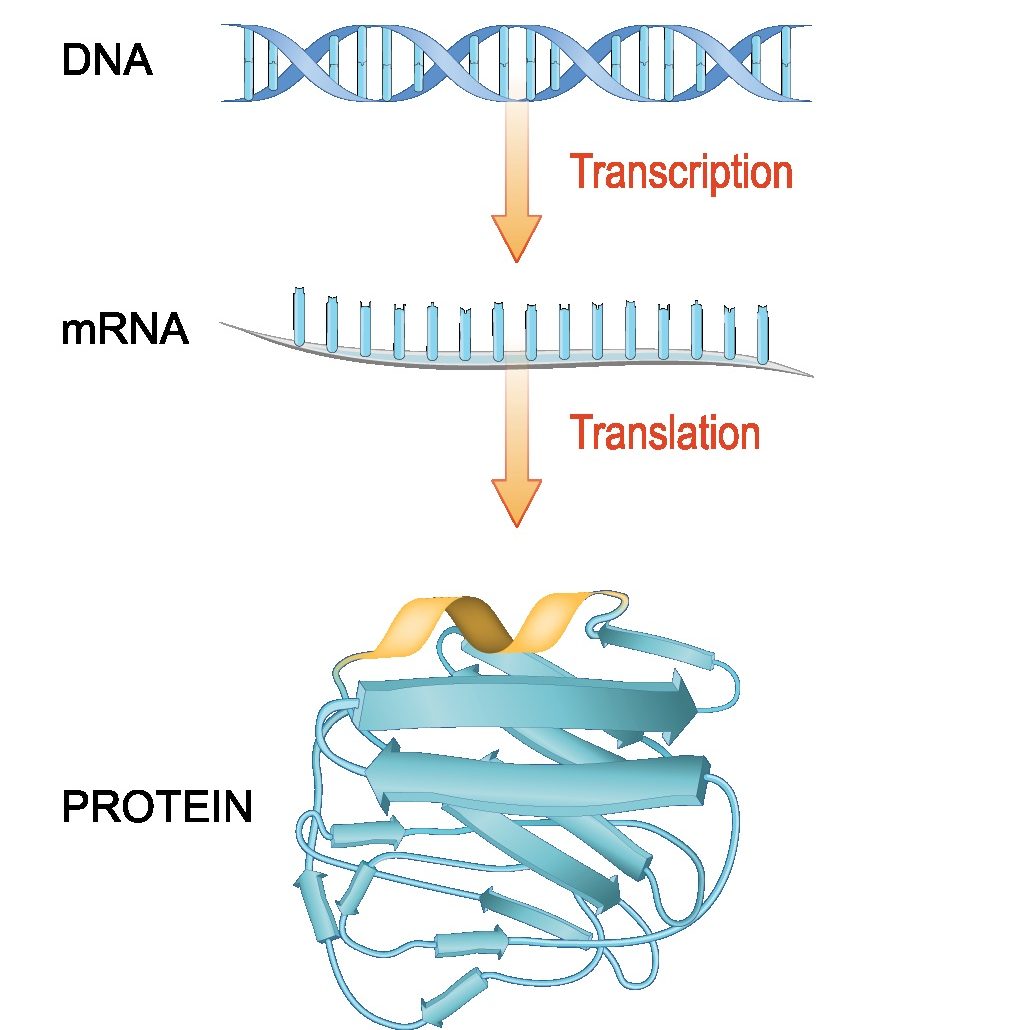
Source: HTG Molecular Diagnostics
- Transcription: The production of messenger RNA, which allows for the processing of mRNA molecules, occurs during transcription, a process aided by the RNA polymerase enzymes.
- Translation: The primary role of messenger RNA (mRNA) is to direct protein synthesis, which in turn triggers post-translational modification of the protein molecules.
Also read: What Is Naturalistic Intelligence? Know Everything About It!
Understanding Genome and Genome Data
In the field of genetics, a genome is a set of genetic information in any organism. Moreover, it has every possible information that an organism might need to function. The structure comprises DNA nucleotide sequences, or RNA in RNA viruses, in addition to other essential components.
Use of genome data
Genome data has different types of use in living organisms due to the characteristics of the cells and genes. The differences in the genetic differences lead to the differences in the susceptibility rate of the infection of disease among the living being. This shows that the understanding of genome data and the makeup that exists among individuals is important for the clinical industry. Therefore, after studying the genetic structure a doctor is able to form a specific treatment for the patients.
During your academic journey, if you encounter difficulties in comprehending genetic material and genome data, seeking help can prove helpful. You can reach online assignment help sites that help students with their queries, like Can I pay someone to do my assignment? In that way, you can not only minimize stress but also improve your subjective understanding.
Ecological genomics
It helps in understanding the way in which genotypes of different living beings interact with one another in nature. Moreover, it is also important in the field of medical applications that focus on the way pathogens interact. Thus, with a close analysis of this ecological genomics, medical professionals are able to look at the genotype of an individual.
With time, different genomics sequences of pathogens have come up over time. One such genome is the bacterial genome which is easy to sequence in as little as one day. Moreover, the speed and cost of forming a sequence of a genome have reduced over time and this has been a beneficial aspect for individuals as well as clinical.
At present individuals can easily submit a sample of the human genome and as a result, receive information on their personal genetic behaviour, ancestry status and information on other diseases. This section outlines the various applications of genetic material and gene processes in science.
Conclusion
We hope this blog served what you needed to know about genetic material. Here we learned about the discovery of genetics, its structure, and its functions. Moreover, we have tried to educate our readers about genome data as well. For more information, keep reading our blogs.
Disclaimer: The information on this site is for educational purposes. Moreover, do not use it as a substitute for professional medical care or advice. Contact a healthcare provider if you have questions about your health.
Frequently Asked Questions
| Question: 1 Who discovered genetic material? Answer: 1 In 1952, Alfred Hershey and Martha Chase were the first scientists to discover genetic material. |
| Question: 2 Who first used genetic? Answer: 2 In 1905, an English biologist, William Bateson introduced the term genetics. Moreover, he also discovered Mendel’s work and later became a champion of Mendel’s inheritance principles. |
